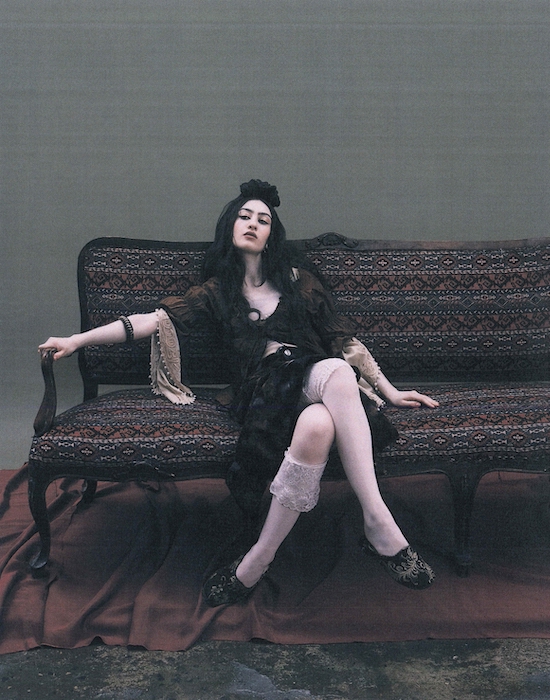Monobrow, Antimony, and Other Beauty Tricks from the Harem
Thick eyebrows meeting above the nose, feet covered with henna, plump lips—this is how feminine beauty was celebrated in paintings of the harem during the Qajar dynasty of the late 18th to early 20th century. These examples can be seen at the State Museum of Oriental Art, where the exhibition “The Twilight of Luxury: Iran during the Qajar Epoch” is running for a few more days. We have recreated the makeup of harem ladies, borrowing from the makeup tricks of those times, and have rethought them in the context of modern beauty techniques.

The Iranian beauties’ favorite cosmetic product was antimony. It was widely used in makeup—as a liner to draw moles, to define the contours of the eyes, and to connect the eyebrows. The ritual of applying the antimony was to draw a line around the eyes, which was repeated several times a day, as by nightfall the gaze was not supposed to lose its languor.








Instead of hair gel, girls applied starch for styling. Also, they used it to make tiny white balls—fake pearls that served as wonderful hair decoration accessories.






In portraits made in harems, girls were not only depicted lying indifferently among cushions or dancing. Sometimes, just like our model, they might freeze in sad poses: that’s how artists hinted at their longing for true love, while their whole life was focused on bringing delight to the shahs who owned them.






Models: Milana Batieva, Anastasia Korotkova, Maya Soerova
Photo: Ksenia Makarova
Video: Kirill Alexandrov
Style: Lorin Mai, Ruslan Nasir
MUAH: Arina Viscera
Idea, production, text: Lana Gogotishvili
Editor: Nastya Indrikova
The EastEast editorial board would like to thank Vertigo Brand and Merzavchik.Store for accessories and utensils used in the photo and video shoot.